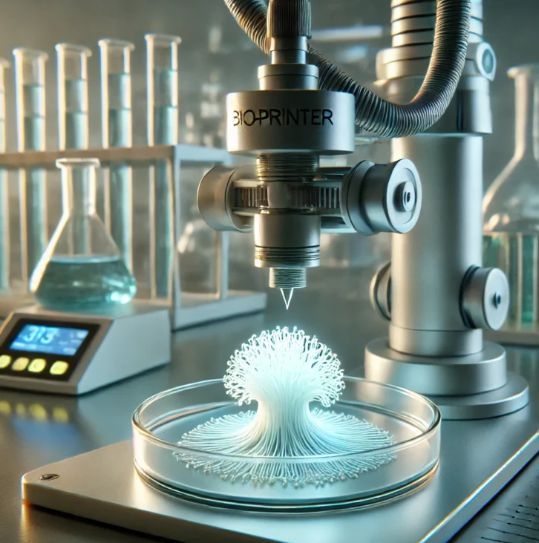SCIENCE

BREAKTHROUGH IN BIOPRINTING BRINGS VASCULARIZED TISSUE CLOSER TO REALITY
Collagen, beyond its role as a critical component of human skin, is the most abundant protein in the body, providing structural support to nearly all tissues and organs. Leveraging their innovative Freeform Reversible Embedding of Suspended Hydrogels (FRESH) 3D bioprinting technology, researchers at Carnegie Mellon's Feinberg lab have created the first-ever fully collagen-based tissue model. This breakthrough could redefine how diseases are studied and how therapies, such as treatments for Type 1 diabetes, are developed.
Historically, microphysiologic systems like microfluidics or organ-on-chip models—which replicate human tissue—relied on synthetic materials like silicone rubber or plastics. However, these materials, being non-native to the human body, cannot fully replicate biological processes, thereby limiting their applications.
According to Adam Feinberg, a professor at Carnegie Mellon, their FRESH 3D bioprinting technique enables scientists to construct these systems entirely from collagen, cells, and proteins. The result is an unprecedented level of structural precision and biological fidelity, which enhances cell function and system performance.
In research recently published in *Science Advances*, the team demonstrated the capability of FRESH bioprinting to fabricate more intricate vascularized tissues using fully biological materials. Among their innovations was a centimeter-scale pancreatic-like tissue capable of producing glucose-stimulated insulin—a potential game-changer for Type 1 diabetes treatment. Enhancements to the technology included improved resolution to generate fluidic channels resembling blood vessels, down to 100-micron diameters, an advancement far exceeding previous bioprinting methods.
Daniel Shiwarski, formerly of Feinberg's lab, described the process as transformative. By incorporating growth factors, cell-laden bioinks, and extracellular matrix proteins alongside a custom bioreactor platform, the team achieved tissue constructs with extraordinary functionality.
FluidForm Bio, a Carnegie Mellon spinout company, has already demonstrated the technology's potential by curing Type 1 diabetes in animal models. With plans to begin clinical trials in humans, the possibilities for therapeutic applications are expanding.
Feinberg and his team emphasize the interdisciplinary nature of their success, combining expertise from biology to material science. They aim to refine the understanding of how printed tissue can be tailored to better mimic diseases or achieve desired functions, ensuring optimal therapeutic outcomes. Additionally, they are committed to releasing open-source designs to encourage widespread adoption within the scientific community.
Ultimately, this platform represents a major leap forward in tissue engineering, offering new tools for studying diseases and creating therapies while inspiring global research efforts to adapt and build upon their achievements.
"This represents a significant development in our ongoing coverage of current events."— Editorial Board









